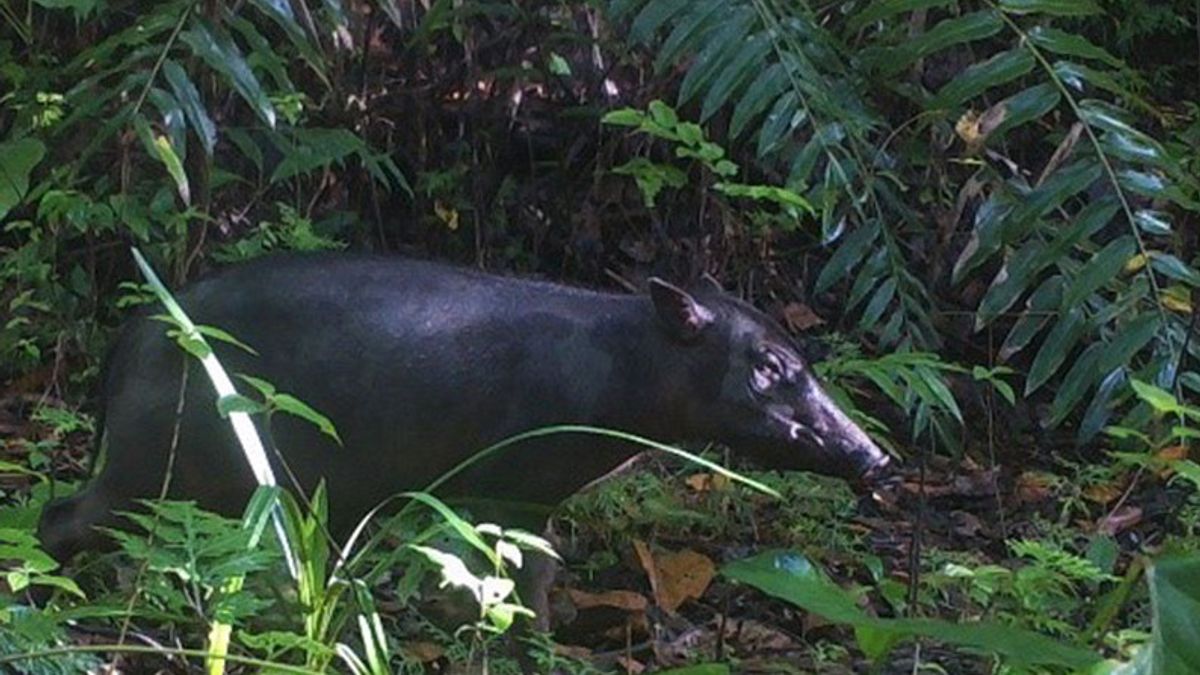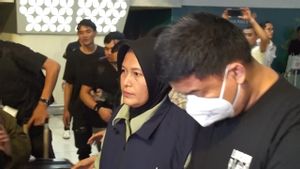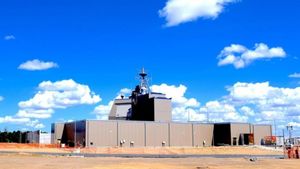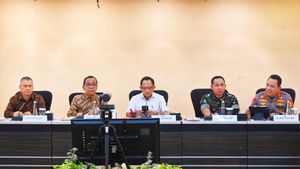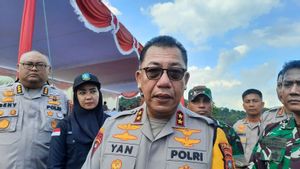AMBON - The Maluku Natural Resources Conservation Agency (BKSDA) team for the first time was able to record the appearance of a lively babirusa maluku. Babirusa was caught by a camera trap installed in the Masbait Nature Reserve area, Buru Island, Maluku.
"This is the first time we have received this survey from several times. We do this babirusa survey almost every year. What we found previously was only traces, then dirt, then it has a puddle in its habitat," said Head of Maluku BKSDA Danny H Pattipeilohy, quoted by Antara. , Saturday, July 17th.
Danny explained that the Babyrousa babyrussa species likes to isolate themselves far enough and is usually found in the highlands, so that local residents almost never see it.
Information from the local community, babirusa is considered a myth and those who see it in the forests of the hills and mountains consider its appearance to show a way out for people who get lost there.
"For the local people, the babirusa is considered a myth, because many people there have never seen the babirusa firsthand," he said. According to Danny, the Masbait Nature Reserve on Buru Island is still in very good natural condition and there are many sources of food for animals. He believes this is a good sign that the babirusa in the area can live and breed safely.
Even so, the Maluku BKSDA has not been able to determine the total population of babirusa in the area. They are still in the analysis process and it will take quite a long time to find out the exact number of these animal populations.
"It takes several analyzes of taking pictures and videos so that we can do individual censuses," he said.
That's why he said the photo obtained is very important because it is the first evidence of the discovery of an intensive survey conducted since 1995.
The 1995 survey had never found a babirusa directly, except for traces of it. With the discovery of the wild animal skull by a hunter in the vicinity of Mount Kapalatmada, Buru Island, in 1997, the island was confirmed as one of the habitats of the Maluku babirusa.
However, there is no evidence of direct meetings, even in the intensive survey of the Maluku BKSDA in conservation areas in 2011-2013, making the existence of babirusa on Buru Island often considered a myth, said Danny.
The Maluku BKSDA received survey equipment support in the form of 20 camera traps and one GPS from the Directorate General of Biodiversity Conservation (Ditjen KSDAE) through the Project Enhancing the Protected Area System in Sulawesi for Biodiversity Conservation (EPASS) in 2020. Only in 2021, he said, their efforts to obtain evidence the existence of my babirusa maluku paid off.
According to Danny, of the 10 camera traps they installed from April to June 2021 in seven locations in the wildlife track area in the conservation area on Buru Island, they managed to capture the presence of these wild animals. "Furthermore, a program of activities for the conservation of Babirusa will be planned, especially on Buru Island such as increased security patrols, public awareness and habitat feeding surveys. In addition, it is planned to carry out monitoring surveys with camera traps in other babirusa habitats, such as on Mangole Island and Taliabu Island, to direct proof of the existence of the Maluku babirusa," said Danny. The babirusa (Babyrousa spp.) is an endemic to Wallace. This region is inhabited by three types of babirusa, namely the sulawesi babirusa (Babyrousa celebensis) which is distributed on the island of Sulawesi, the togean babirusa (Babyrousa togeanensis) which spreads to several islands in the Togean Islands, and the Maluku babirusa (Babyrousa babyrussa) whose distribution is identified to include the Sula Islands, namely Pulau Mangole, Taliabu, and Buru. Babyrousa spp. included in Appendix I of CITES, meaning that the specimens are prohibited to be traded either in the form of living and or dead and or their parts and derivative products. These wild animals are also included in the IUCN Red List as endangered species in the vulnerable category.
Nationally, the babirusa species is included in the protected species according to Government Regulation Number 7 of 1999 concerning Preservation of Plant and Animal Species, as the attachment was amended through the Regulation of the Minister of Environment and Forestry Number 106 of 2018, which confirms that the babirusa species is protected by laws and regulations. Conservation of Biodiversity Ministry of Environment and Forestry (KLHK) Indra Exploitasia expressed his appreciation for the efforts and hard work of the Maluku KSDA Balai Team in an effort to obtain concrete evidence of the existence of the babirusa which is a National Priority Animal that has been fully protected since 1931. installed by the Maluku BKSDA it also captured several pictures of other types of animals, such as the charred Maluku (Eulopia wallacei), arika bird (Gallicrex cinerea), black charred (Megaphodius freycinet buruensis), civet/rase (Viverra tangalunga), monitor lizard (Varanus salvatori), Timor deer (Rus a timorensis), and the Sulawesi wild boar (Sus celebensis).
The English, Chinese, Japanese, Arabic, and French versions are automatically generated by the AI. So there may still be inaccuracies in translating, please always see Indonesian as our main language. (system supported by DigitalSiber.id)
